Tamil Nadu Villagers Turn To Ancient Water Harvesting Practice To Save Themselves From Drought
Sharada Balasubramanian October 15, 2016 http://www.indiatimes.com/news/india/tamil-nadu-villagers-turn-to-ancient-water-harvesting-practices-to-save-themselves-from-drought-263556.html
In drought areas like Ramanathapuram in Tamil Nadu, villagers have reclaimed old water harvesting structure called Oorani. These ponds guarantee availability of safe drinking water in an environment-friendly way at a low investment. Ooranis play a huge role in groundwater conservation and recharge, and are useful for farmers who do not have water source for irrigation or find it expensive. This technique is energy-saving too, as compared to pumping water using bore wells.
Where extensive use of borewells have led to over extraction of ground water, simple old techniques like ooranis can be revived and used by villagers to prevent water scarcity in times of poor rainfall. Villages in this district formed Tank Users Association for restoration of these ponds with the help of NGO and the state government.
One year after setting up these tanks, and the first rainfall thereafter, the tank was filled with water, relieving farmers, as they started cropping their land. Following this success, villages in the neighbouring areas also began to restore and build such ponds.
It is believed that every village in southern India once had more than three water bodies. With the onset of irrigation, ancient water storage structures, which existed since 2000 years, lay abandoned. In Tamil Nadu, districts like Ramanathapuram face severe water crisis as there is no river source for water.

Dhan Foundation, an NGO, along with the local villagers restored ooranis (dug out ponds in Tamil) for a water secure future.
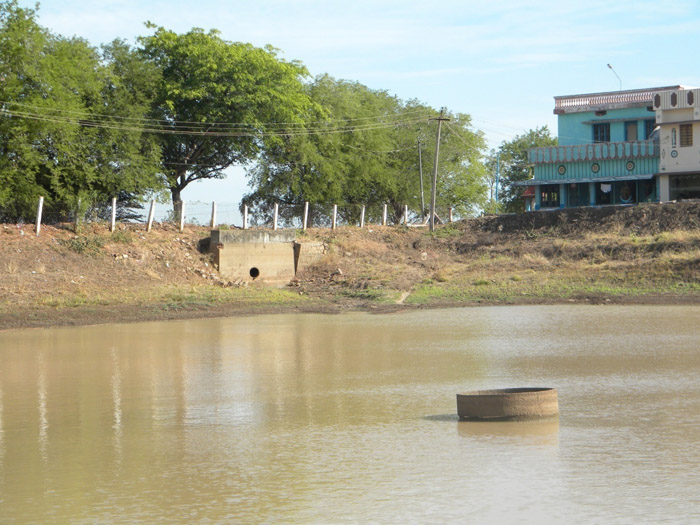
Ooranis, which go back to more than 2000 years, are structures formed in rural areas where ground water is scarce or unfit for use, like the Ramanathapuram district of Tamilnadu. In Savariarsamudram village of the state, people left their footwear before stepping into the water tank as a mark of respect and culture.
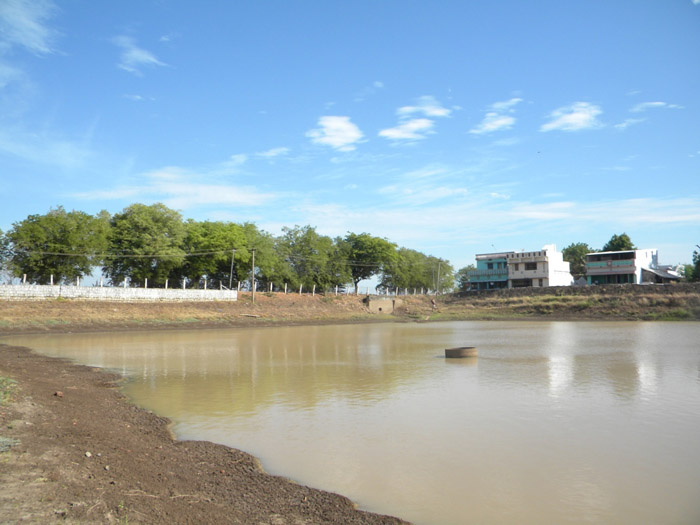
In 2012, when south west monsoons failed, villagers were forced to buy water despite poor economic conditions. This village in Ramanathapuram was free from water scarcity during this time, and it stands as a testimony to how ancient water harvesting practices can succeed even today.
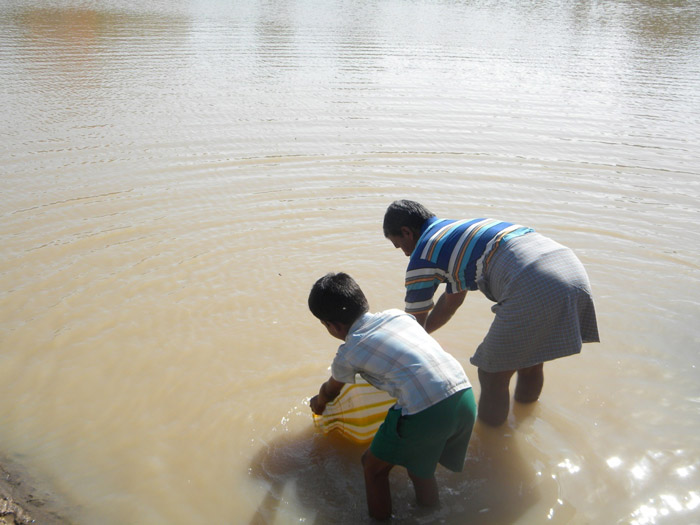
It’s not just the local people, but also the neighbouring villagers who came to this village to draw water, as good as the olden times when water sharing was a common practice.
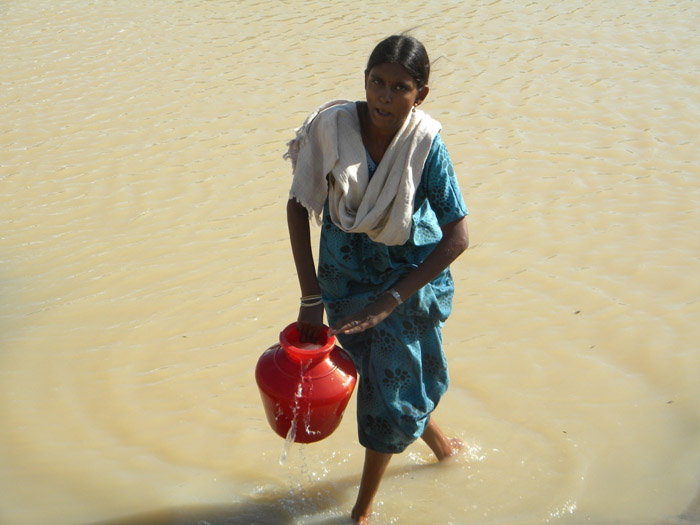
These water harvesting and cleaning mechanisms have improved the lives of women and children, who spend significant time fetching water by walking for hours.
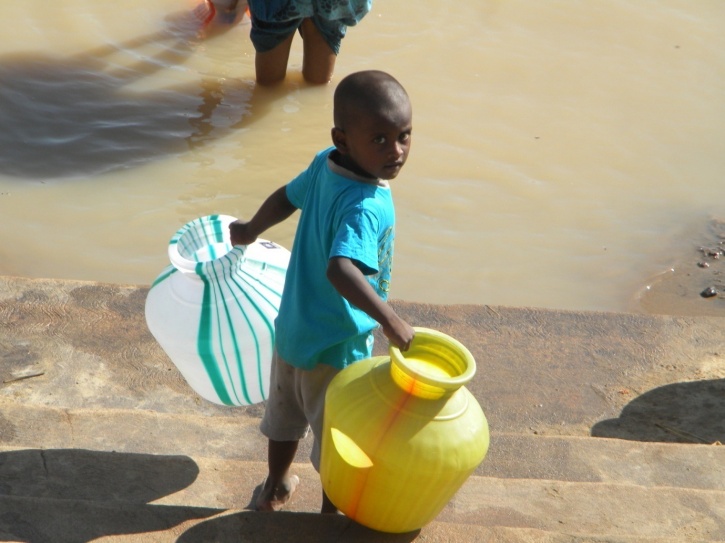

The oorani water is murky, so people buy seeds called ‘thethankottai’. The water stored in the earthen pot is scrubbed with a handful of seeds.
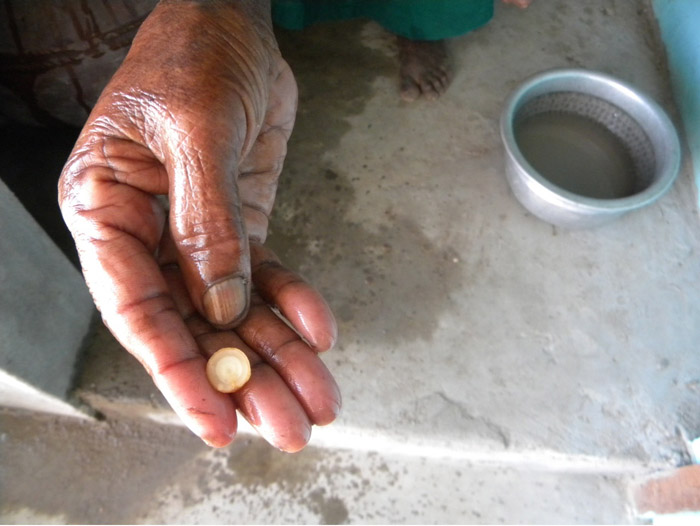
The pot is scrubbed with these seeds for a good 20 minutes, after which the water is clear and drinkable. The seed sedimentation process works well, and is commonly used by the locals.
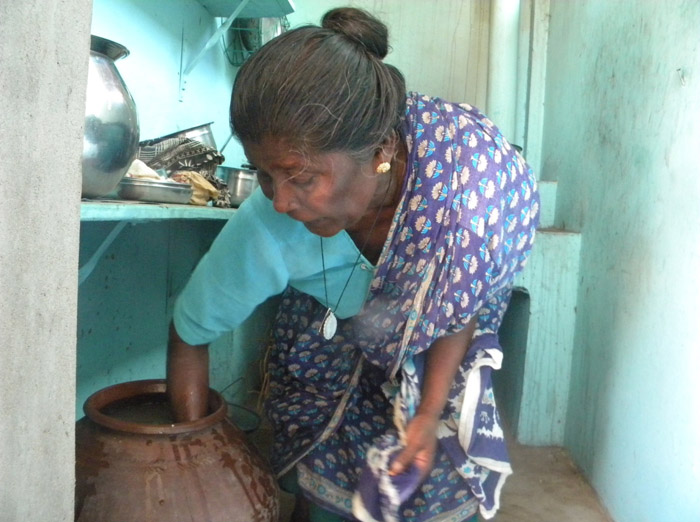
Children from the local village and the neighbouring areas share playful moments as they gather to collect the oorani water
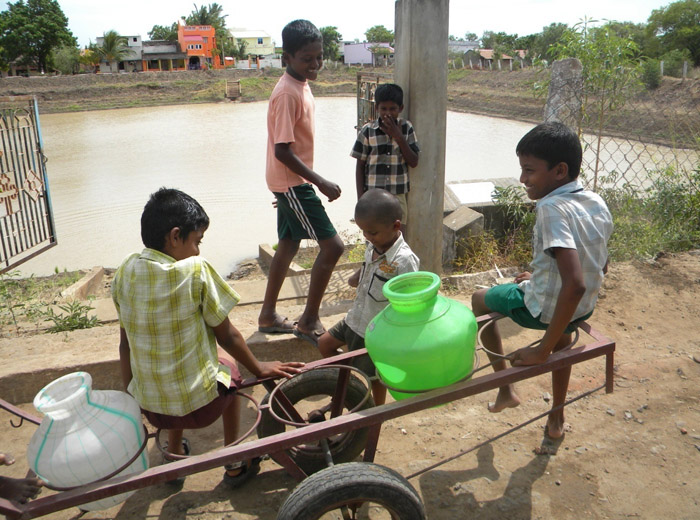
Sharada Balasubramanian October 15, 2016 http://www.indiatimes.com/news/india/tamil-nadu-villagers-turn-to-ancient-water-harvesting-practices-to-save-themselves-from-drought-263556.html
In drought areas like Ramanathapuram in Tamil Nadu, villagers have reclaimed old water harvesting structure called Oorani. These ponds guarantee availability of safe drinking water in an environment-friendly way at a low investment. Ooranis play a huge role in groundwater conservation and recharge, and are useful for farmers who do not have water source for irrigation or find it expensive. This technique is energy-saving too, as compared to pumping water using bore wells.
Where extensive use of borewells have led to over extraction of ground water, simple old techniques like ooranis can be revived and used by villagers to prevent water scarcity in times of poor rainfall. Villages in this district formed Tank Users Association for restoration of these ponds with the help of NGO and the state government.
One year after setting up these tanks, and the first rainfall thereafter, the tank was filled with water, relieving farmers, as they started cropping their land. Following this success, villages in the neighbouring areas also began to restore and build such ponds.
It is believed that every village in southern India once had more than three water bodies. With the onset of irrigation, ancient water storage structures, which existed since 2000 years, lay abandoned. In Tamil Nadu, districts like Ramanathapuram face severe water crisis as there is no river source for water.

Dhan Foundation, an NGO, along with the local villagers restored ooranis (dug out ponds in Tamil) for a water secure future.

Ooranis, which go back to more than 2000 years, are structures formed in rural areas where ground water is scarce or unfit for use, like the Ramanathapuram district of Tamilnadu. In Savariarsamudram village of the state, people left their footwear before stepping into the water tank as a mark of respect and culture.

In 2012, when south west monsoons failed, villagers were forced to buy water despite poor economic conditions. This village in Ramanathapuram was free from water scarcity during this time, and it stands as a testimony to how ancient water harvesting practices can succeed even today.

It’s not just the local people, but also the neighbouring villagers who came to this village to draw water, as good as the olden times when water sharing was a common practice.

These water harvesting and cleaning mechanisms have improved the lives of women and children, who spend significant time fetching water by walking for hours.


The oorani water is murky, so people buy seeds called ‘thethankottai’. The water stored in the earthen pot is scrubbed with a handful of seeds.

The pot is scrubbed with these seeds for a good 20 minutes, after which the water is clear and drinkable. The seed sedimentation process works well, and is commonly used by the locals.

Children from the local village and the neighbouring areas share playful moments as they gather to collect the oorani water

No comments:
Post a Comment